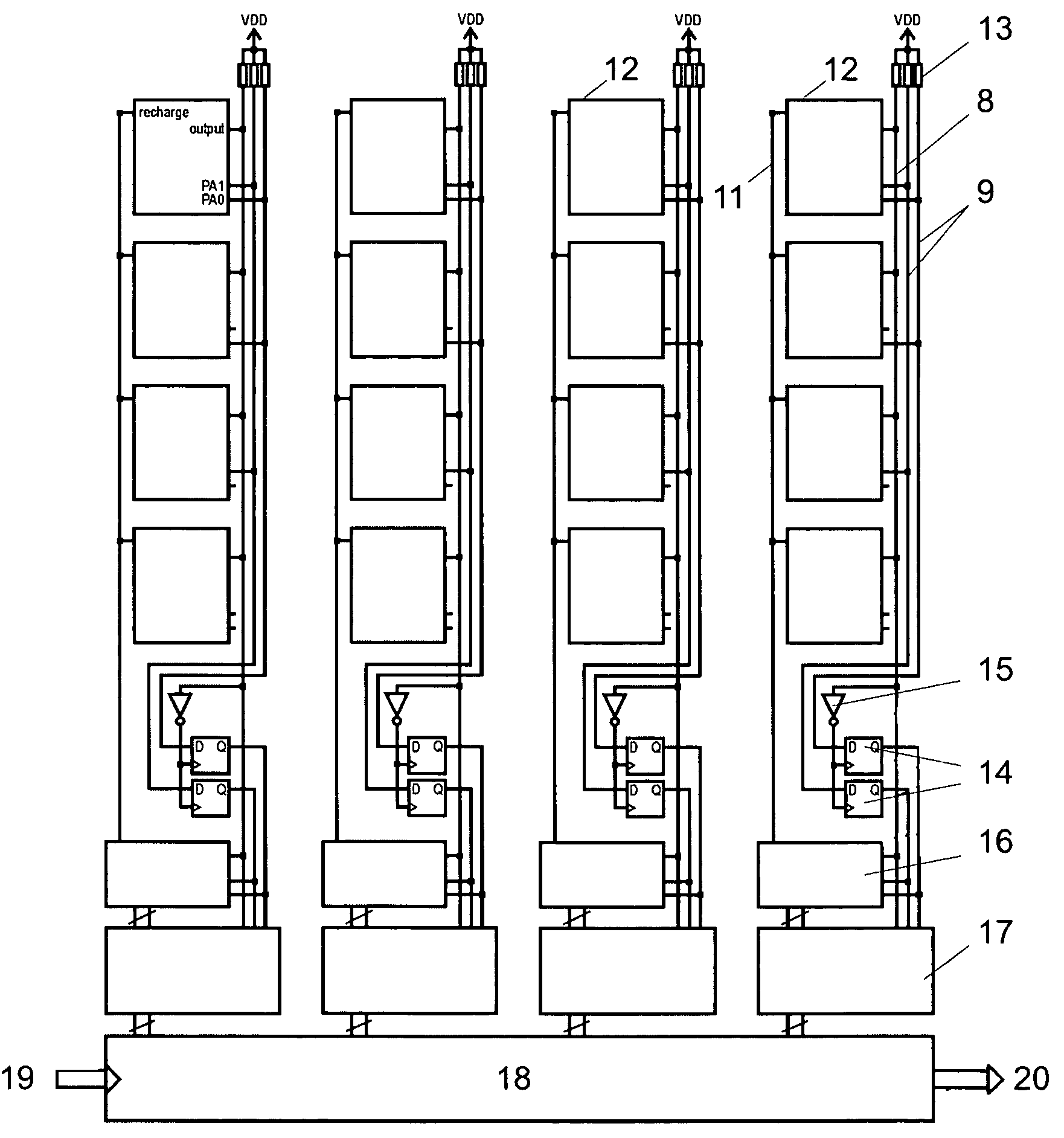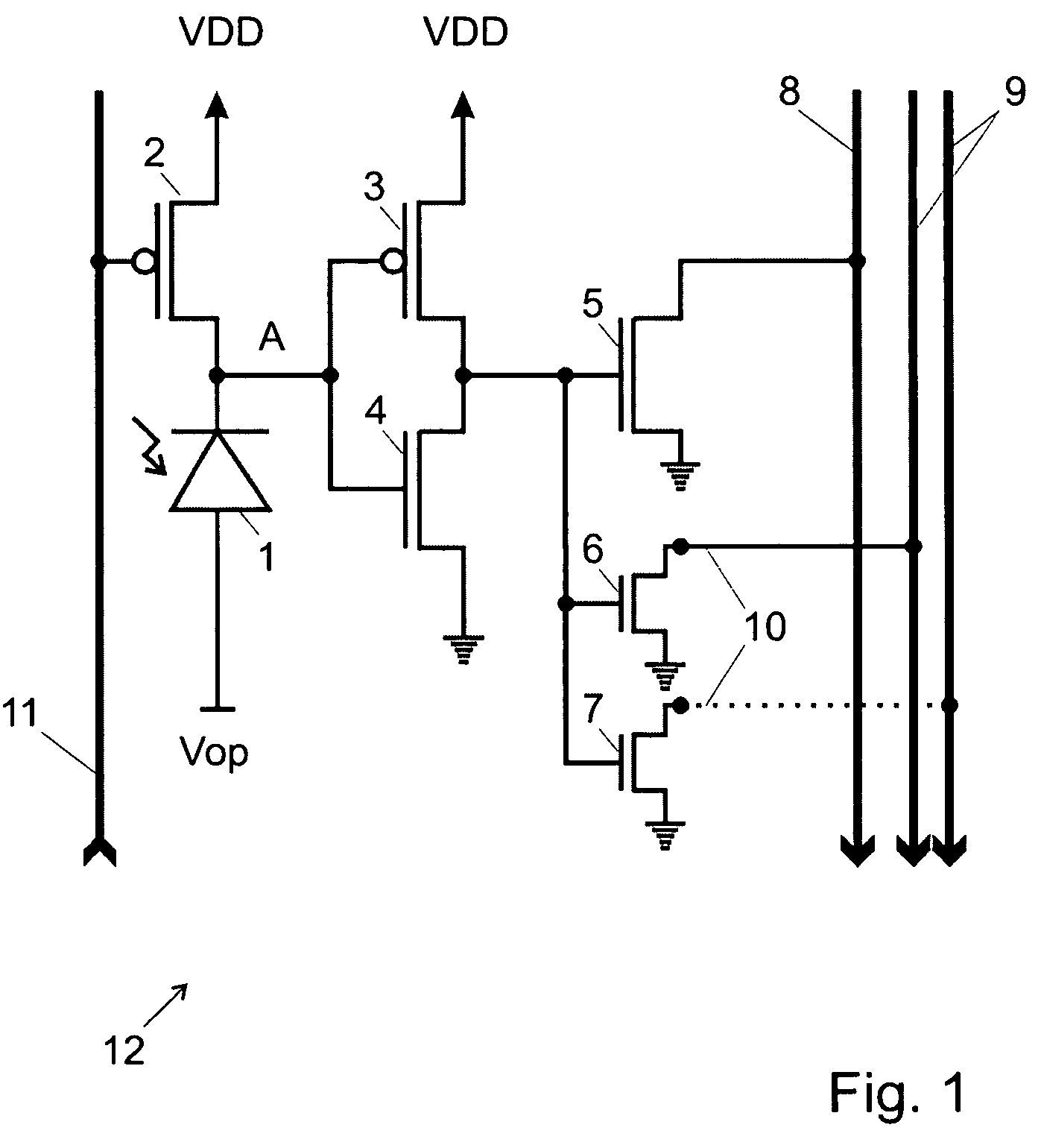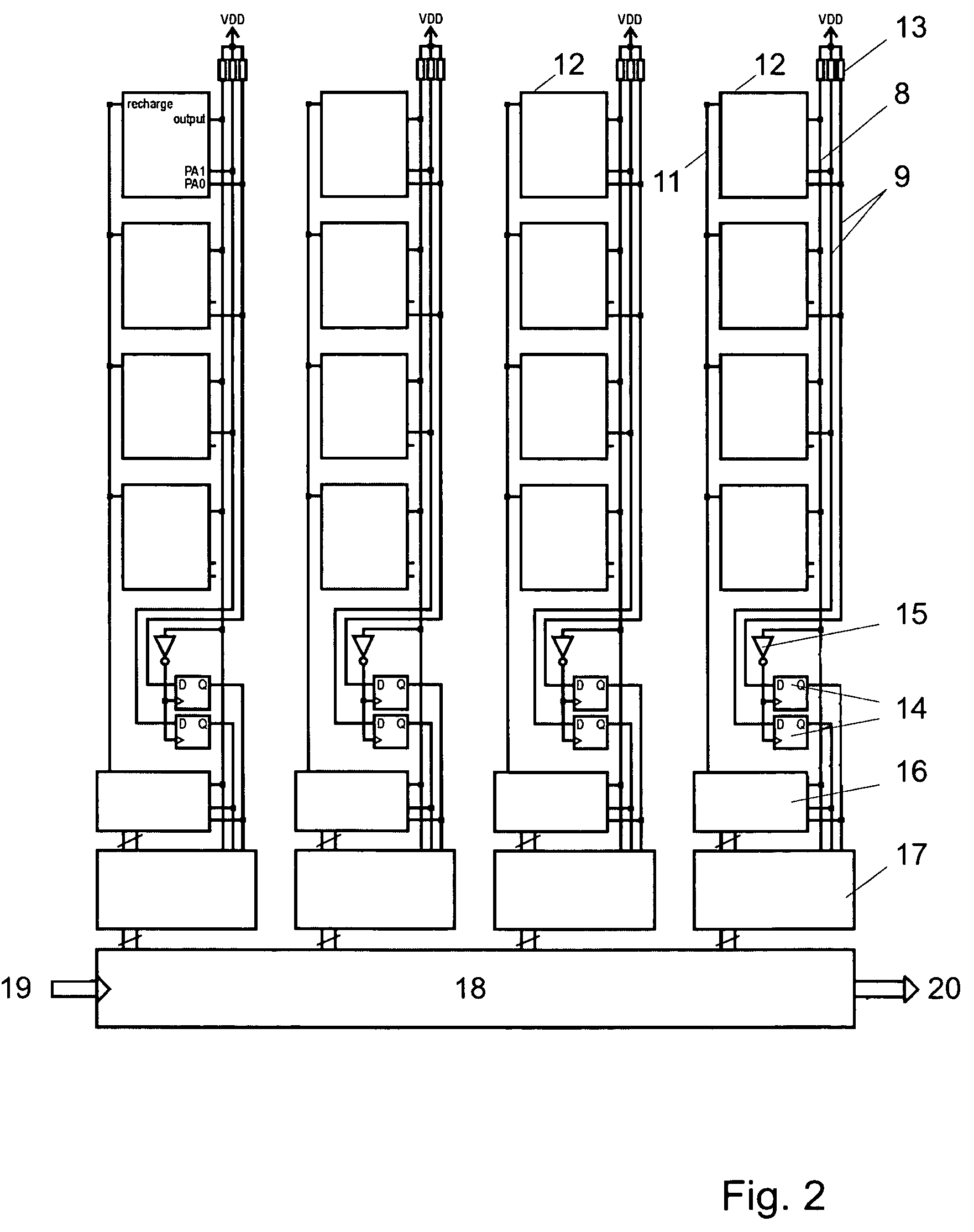Integrated circuit comprising an array of single photon avalanche diodes
a technology of integrated circuits and diodes, which is applied in the field of integrated circuits comprising single photon avalanche diodes, can solve the problems of incompatibility of sensors, spads cannot store brightness information, and existing arrays of spads suffer from limited lateral resolution, so as to achieve high performance and reduce power consumption
- Summary
- Abstract
- Description
- Claims
- Application Information
AI Technical Summary
Benefits of technology
Problems solved by technology
Method used
Image
Examples
Embodiment Construction
[0028]FIG. 1 shows an embodiment of a pixel 12 based on a SPAD (single photon avalanche diode). A SPAD is a p-n junction biased above breakdown voltage Vbd by an excess voltage Ve of a few volts. Operated in the so-called Geiger mode, avalanche photodiodes can react on single photons. A primary carrier resulting from the absorption of a photon may generate a nearly-infinite number of secondary electron-hole pairs by impact ionization.
[0029]In the embodiment of pixel illustrated by FIG. 1, reference numeral 1 represents the SPAD; 2 is a quenching (recharging) transistor; 3 and 4 define a CMOS inverter, 5 is the output transistor, 6 and 7 represent addressing transistors, 8 is a shared output bus line, 9 denotes shared address bus lines, 10 are connections used to code the pixel address, 11 is an optional recharging line.
[0030]FIG. 2 shows an example of the proposed architecture whereby the pixel readout circuit is arranged in columns. In order to simplify the description, a m×n array...
PUM
 Login to View More
Login to View More Abstract
Description
Claims
Application Information
 Login to View More
Login to View More - R&D
- Intellectual Property
- Life Sciences
- Materials
- Tech Scout
- Unparalleled Data Quality
- Higher Quality Content
- 60% Fewer Hallucinations
Browse by: Latest US Patents, China's latest patents, Technical Efficacy Thesaurus, Application Domain, Technology Topic, Popular Technical Reports.
© 2025 PatSnap. All rights reserved.Legal|Privacy policy|Modern Slavery Act Transparency Statement|Sitemap|About US| Contact US: help@patsnap.com



